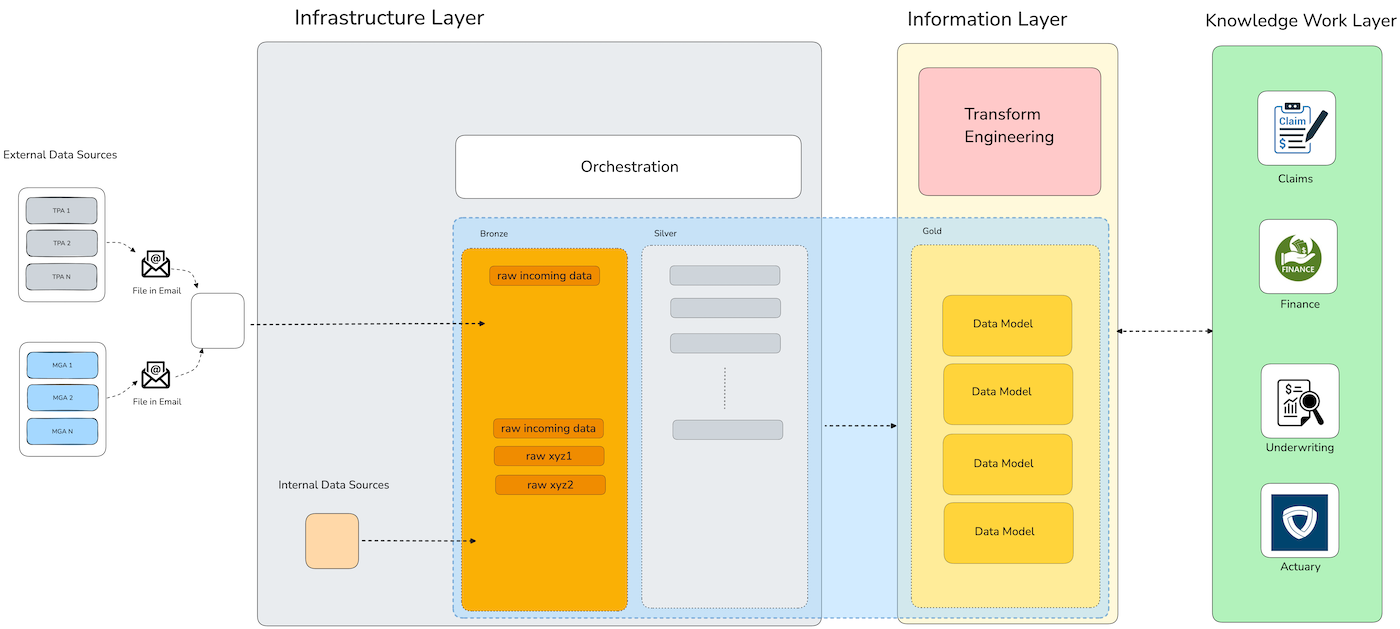Workflow Analysis, Data Strategy, and Platform Architecture
Service: Knowledge Work Architecture Review
"Everything Hurts"
A common ailment in knowledge work focused companies is how nobody is getting the data they need and that everything takes too much time and effort.
This engagement addresses critical inefficiencies in knowledge work and data processes that hinder timely analytical insights within the organization. By evaluating how business users interact with data—particularly the time spent on data integration versus high-value tasks—we identify structural bottlenecks impacting decision-making and productivity. Our review focuses on streamlining knowledge workflows through improved information architecture and platform alignment, ensuring that business users can access reliable, reconciled data swiftly and focus on delivering strategic value.
From Data Integration to Knowledge Work Applications

Business Processes Analysis
For each of the divisions we document:
- Pain points
- Associated business consequences
- Technology pain
- List information needed
- List tools used
We analyze the core knowledge work performed by the line of business and what information obligations are required by each business unit.
Current Architecture Review
The current data platform shows critical gaps, with division-specific pain points linked to poor integration and delayed insights.
These issues increase costs and limit business agility. Targeted technology investments can address these challenges and enable scalable growth as data volumes increase across the organization.
Planning for a Next-Generation Architecture
To support the strategic evolution of our data capabilities, we propose a next generation platform architecture designed to seamlessly integrate all knowledge work data across the organization. This architecture will enable continuous support for legacy workflows while introducing a logical information layer that ensures consistent, daily-refreshed access to integrated data. Key business workflows, along with divisional constraints and tooling, will inform a phased evolution approach.
The platform will be built on robust foundations, including a modern Data Lake, a scalable orchestration system, a comprehensive semantic (information) layer, and fault-tolerant data integration that delivers 100% reliability.